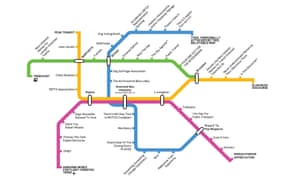The RSA Chief Executive’s Lecture 2018 by Matthew Taylor: “In 1989 with the fall of the Berlin Wall still echoing, Francis Fukuyama prophesied the global triumph of liberal democracy and the end of history. Thirty years on it is not history in jeopardy but liberal democracy itself.
China – the rising global power – is thriving with a system which combines economic freedom with political autocracy. There is the growth of what Yascha Mounk calls illiberal democracies – countries with notionally free elections but without the liberal foundations of accountability, civil liberties and cultural openness. The issue with nations like Russia, Hungary and Turkey, and with those exhibiting a backlash against liberalism like America and Italy, is not just how they operate but the tendency for populism – when given the excuse or opportunity – to drift towards authoritarianism.
While the alternatives to the liberal democratic system grow more confident the citizens living in those systems become more restless. Politicians and political institutions in countries are viewed with dismay and contempt. We don’t like them, we don’t trust them, we don’t think they can solve the problems that most matter to us. The evidence, particularly from the US, is starting to suggest that disillusionment with politics is now becoming indifference towards democracy itself.
Will liberal democracy come back into fashion – is this a cycle or is it a trend? Behind the global patterns each country is different, but think of what is driving anger and disillusionment in our own.
Living standards flat-lining for longer than at any time since the industrial revolution. A decade of austerity leaving our public services threadbare and in a mode of continual crisis management. From social care to gangs, from cybercrime to mental health, how many of us think Government is facing up to the problems let alone developing solutions?
Inequality, having risen precipitously in the 1980s, remains stubbornly high, fuelling anger about elites and making not just the economic divide but all divisions worse.
Social media – where increasingly people get their information and engage in political discourse – has the seemingly in-built tendency to confirm prejudice and polarise opinion.
The great intertwined forces shaping the future – globalisation, unprecedented corporate power, technological change – continue to reinforce a sense in people, places and nations that they have no agency. Yet the hunger to take back control which started as tragedy is rapidly becoming a farce.
If this is the warm climate in which disillusionment has taken root and grown it shows few signs of cooling.
For all its many failings, I have always believed that over the long term liberal democracy would carry on making lives better for most people most of the time. As a progressive my guiding star is what Roberto Unger has called ‘the larger life for all’. But for the first time, I view the future with more fear than hope.
There are those who disparage pessimism. To them the backlash against liberalism, the signs of a declining faith in democracy, are passing responses to failure and misfortune. Populism will give the system the wake-up call it needs. In time a new generation of leaders will renew the system. Populism need neither be extreme nor beget authoritarianism – look at Macron.
This underestimates the dangers that face us. It is too reminiscent of those who believed, until the results came in, that the British people would not take the risk of Brexit or that the Americans would reject the madness of Trump. It underestimates too how the turn against liberal democracy in one country can beget it in another. Paradoxically, today nationalists seem more able to collaborate with each other than countries ostensibly committed to internationalism. Chaos spreads more quickly than order. Global treaties and institutions take years to agree, they can breakdown overnight.
Of course, liberal democracy has failed over and again to live up to its own promise. But the fact that things need to change doesn’t mean they can’t get a whole lot worse.
We are also in danger of underestimating the coherence and confidence of liberalism’s critics. Last month Hungarian Prime Minister Victor Orban made a powerful speech defending his brand of nationalist populism and boasting of his growing alliances across Europe. He appealed to the continent’s centre-right to recognise that it has more in common with conservative nationalism than the EU’s liberal establishment. There are aspects of Orban’s analysis which have an understandable appeal to the mainstream, but remember this is also a man who is unashamedly hostile to Islam, contemptuous of humanitarianism, and who is playing fast and loose with democratic safeguards in his own country.
We may disagree about how malign or dangerous are figures like Orban or Erdogan, or Trump or Salvini, but surely we can agree that those who want to defend the open, pluralistic, inclusive values of liberal democracy must try to make a better case for what we believe?
In part this involves defending the record of liberal societies in improving lives, creating opportunities and keeping the peace, at least between themselves. But it also means facing up to what is going wrong and what must change.
Complex problems are rarely addressed with a single solution. To ever again achieve the remarkable and unprecedented economic and social advances of the three decades after the Second World War, liberal democracy needs profound renewal. But change must start some place. This evening I want to argue that place should be the way we do democracy itself…(More) (Video)”.

